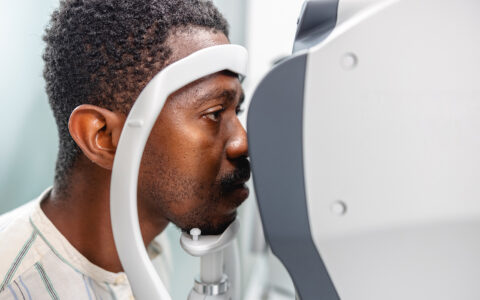Sleeping roughly the same number of hours each night lessens the risk of atherosclerosis in adults who do not already have prevalent heart disease, a study in the Journal of the American Heart Association has shown.
Researchers found significant differences in the levels of early, subclinical markers of atherosclerosis among people who had regular sleep habits when compared with those who had highly irregular ones.
“For a long time, sleep duration, the total amount of time a person slept, has been a strong focus of sleep research,” said the study’s lead author, Kelsie Full, Ph.D., a behavioral epidemiologist and an assistant professor at Vanderbilt University Medical Center. “What we found, and what several other papers have shown, is that sleep regularity – meaning that you get about the same amount of sleep every night – appears to matter for cardiovascular health.”
By excluding individuals with existing heart disease, the researchers were able to pinpoint atherosclerosis risks in general for those who maintained irregular sleep hours.
Striking Results
“Participants with more irregular sleep durations were 1.40 times more likely to have high coronary artery calcium burden compared with participants with regular sleep durations, after adjustments for demographic, lifestyle factors, and body mass index,” the researchers wrote.
“Irregular sleep was independently associated with atherosclerosis, regardless of total sleep time.”
Those with irregular sleep durations were also more likely to have carotid plaque and abnormal ankle-brachial index, they reported.
The impact of irregular sleep patterns on cardiovascular disease development was independent of total time slept. Even for those who slept relatively few hours, regularity still proved important.
“Irregular sleep was independently associated with atherosclerosis, regardless of total sleep time,” Full said.
Since the study was cross-sectional, the data does not provide evidence of irregular sleep causing heart disease. It did, though, establish a strong association between irregular sleep and increased risk.
An Ancillary Study
The study grew out of the Multi-Ethnic Study of Atherosclerosis (MESA). MESA is an investigation of the characteristics of cardiovascular changes detectable prior to the onset of symptoms and the risk factors associated with either progression of subclinical disease or an eventual diagnosis of cardiovascular illness.
The present, MESA Sleep Ancillary Study excluded shift workers, who often have highly variable schedules, and people with existing heart disease.
MESA research participants include 6,814 men and women ages 45 to 84 years without symptoms of atherosclerosis seen at clinics in and near Baltimore, Chicago, Los Angeles, New York City, Minnesota’s Twin Cities, and Winston-Salem, North Carolina. Roughly 38 percent are white, 28 percent are African American, 22 percent are Hispanic, and 12 percent are Asian, mostly of Chinese descent.
The Sleep Ancillary Study involved a subset of the MESA participants: 2,032 individuals without diagnosed heart disease who underwent assessments to gauge the extent of atherosclerosis, including tests for coronary artery calcium and the presence of carotid plaque.
“It’s really important for us to investigate how sleep issues vary and to learn about their effects in different populations. It makes not only my paper, but other studies using the MESA data so meaningful,” Full said.
This research was supported by the National Heart, Lung, and Blood Institute and by the National Center for Advancing Translational Sciences.
Wearable Technology Essential
The participants wore an accelerometer on their wrist, making it possible to assess their sleep patterns over a seven-day period. They also underwent a sleep study, polysomnography, in their home for one night.
“It’s really been the incorporation of wearables that allow us to capture new sleep measurements in a reliable fashion that has allowed us to do this kind of research,” Full said.
The technology showed that sleep duration irregularity was associated with several measures of subclinical atherosclerosis as determined by CT scan, ultrasonography and blood pressures.
Intervention Without Downsides
Highlighting, as it does, such a straightforward, virtually risk-free, and cost-free approach to primary prevention of the national’s number one killer, heart disease, the study has aroused keen media attention.
Full has discussed the study with major media outlets including the New York Times and CNN.
“We all know that we feel better and have a better mood and more energy when we sleep better but we don’t necessarily feel that it’s really important for cardiovascular health,” Full said.
Providers Should Encourage Regular Sleep
“Sleep regularity, or maintaining regular sleep schedules, is kind of a new concept. It’s a potentially modifiable aspect of sleep that health care providers can encourage among their patients. This means that we can intervene on sleep,” Full said.
“Sleep regularity is kind of a new concept. It’s a potentially modifiable aspect of sleep that health care providers can encourage among their patients. This means that we can intervene on sleep,”
A regular sleep schedule is something people can strive to improve to have a big impact on heart health.
“I may not be able to control how often I wake up in the night, but I can do my best to go to bed at about the same time and get up at about the same time,” she said.
“Clinicians can communicate about the importance of regular sleep patterns and encourage them, especially in people with a family history of heart disease.”





